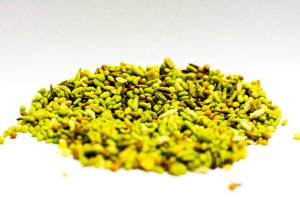Cooking with Whole Grains for Better Health
Are you looking for a way to improve your health through your diet? Look no further than incorporating whole grains into your cooking! Whole grains are an essential part of a balanced and healthy diet, and they offer numerous health benefits that can help you maintain optimal well-being. In this article, we will discuss the importance of cooking with whole grains and provide some tips and recipes to help you get started on your journey towards better health.
The Benefits of Whole Grains
Whole grains are grains that contain all three parts of the grain – the bran, germ, and endosperm. These parts are rich in essential nutrients such as fiber, B vitamins, iron, and magnesium. By consuming whole grains, you can reduce your risk of developing chronic diseases such as heart disease, diabetes, and certain cancers. Additionally, whole grains have a lower glycemic index, meaning they provide a slow and sustained release of energy, keeping you feeling full and satisfied for longer periods. This can help with weight management and reducing the risk of obesity.
The Importance of Cooking with Whole Grains
Many of us rely on refined grains in our daily diet, such as white rice and white bread. However, these refined grains have been stripped of their valuable nutrients during the processing phase. By cooking with whole grains, you can ensure your body is getting all the essential nutrients it needs for proper functioning and overall well-being. Not only that, but whole grains add a delicious and satisfying texture to meals, making them a perfect addition to any dish.
Tips for Cooking with Whole Grains
If you’re new to cooking with whole grains, it can seem overwhelming at first. But fear not, here are some tips to help you get started:
1. Experiment with Different Whole Grains
There is a wide variety of whole grains available, each with its unique flavor and texture. Some popular options include brown rice, quinoa, oats, and bulgur. Experiment with different options to find your favorites and mix things up in the kitchen.
2. Start Small
If you’re not used to consuming whole grains regularly, start by incorporating small amounts into your meals. For example, replace a portion of white rice with brown rice or mix quinoa into your salad. As you become more comfortable with the taste and texture, you can gradually increase the amount of whole grains in your meals.
3. Use Whole Grain Flour in Baking
Instead of using refined flour in your baked goods, try using whole grain flour instead. You can find whole wheat flour, oat flour, and other options in most grocery stores. You’ll be surprised at how delicious and nutritious your baked treats will turn out!
Delicious Whole Grain Recipes
Ready to start cooking with whole grains? Here are some easy and tasty recipes to get you started:
1. One-Pot Quinoa Vegetable Soup
This hearty soup is rich in protein and packed with nutritious vegetables. Simply cook quinoa in a pot with your favorite vegetables and spices for a delicious and filling meal.
2. Coconut Oatmeal Bowl
This recipe is perfect for breakfast or a quick and healthy snack. Cook oats with coconut milk and top with your favorite fruits, nuts, and seeds for a tasty and nutritious meal.
3. Whole Wheat Veggie Pizza
Who says pizza can’t be healthy? Use whole wheat flour to make the pizza dough and top it with your favorite vegetables for a nutrient-packed and delicious meal.
Incorporating whole grains into your meals is an excellent way to improve your overall health and well-being. With these tips and recipes, you can start cooking with whole grains and reap the numerous health benefits they offer. So why not give it a try and see the positive changes in your health and taste buds!











